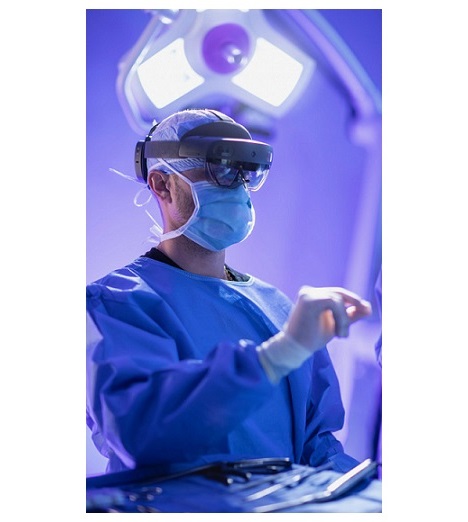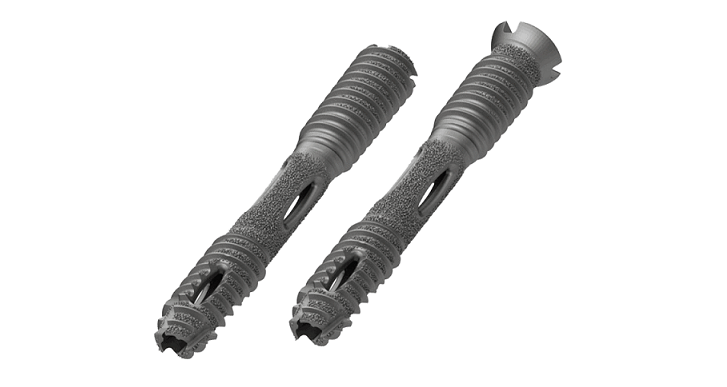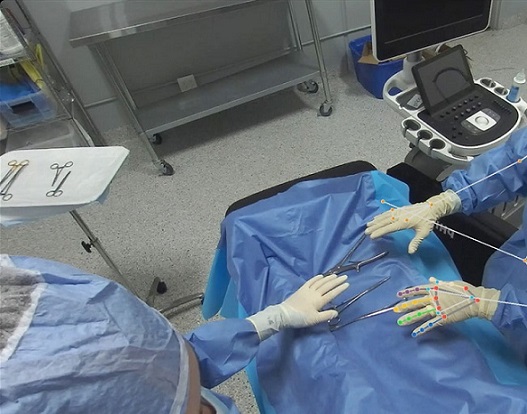New MedTech Advancement Brings First-of-Its-Kind Technology to Spine Surgeons, Delivering Advanced Visualization and User-Centric Procedural Control
RAYNHAM, Mass., Oct. 20, 2022 /PRNewswire/ — Today, Johnson & Johnson MedTech* announced that DePuy Synthes, The Orthopaedics Company of Johnson & Johnson**, has secured 510(k) clearance from the U.S. Food and Drug Administration (FDA) for its TELIGEN™ System, an integrated technology platform that enables minimally invasive surgical transforaminal lumbar interbody fusion (MIS-TLIF) procedures through digital tools for visualization and access. The TELIGEN™ System is comprised of a tower that delivers a suite of technologies, including: a camera control system, a VueLIF-T™ Procedure Kit with a disposable HD camera, a TELIGEN™ Clear Discectomy Device and patient-based disposable ports. The TELIGEN™ System integrates with the UNLEASH™ bundle of implant solutions, which is designed to streamline the main stages in MIS-TLIF.
Low back pain is the leading cause of years lived with disability globally, with prevalence estimated to be about 7.5% of the population worldwide, or around 577 million people.1 For patients with degenerative disease, persistent pain, and spinal instability who fail to respond to noninvasive management, surgical interbody fusion may be the best option. Transforaminal lumbar interbody fusion (TLIF) is a common posterior surgical approach with favorable fusion rates.2 Open TLIF, however, can present clinical challenges, including greater soft tissue disruption2, increased complication risk3-6, slower recovery7,8, and variable long-term outcomes, such as greater back pain and disability.8 MIS-TLIF techniques have evolved to reduce complications seen with open TLIF2; however, they may be associated with certain limitations, such as lack of consistent visualization9, steep learning curve9, and occupational hazards to the surgeon.10,11
“The DePuy Synthes TELIGEN™ System with VueLIF-T procedure has the potential to change MIS spinal surgery as we know it,” said Dr. Michael Wang***, Professor of Neurosurgery and Rehab Medicine at the University of Miami Medical Center. “With the TELIGEN™ System, we will have a larger and clearer field of view – something we’ve never had before. This expanded visibility will be invaluable to improving surgical performance and ultimately delivering better patient outcomes.”
The TELIGEN™ System delivers an advanced visualization experience and user-centric procedural control. The digitally enabled TELIGEN VUE™ Camera, located at the distal end of the patient-specific port, eliminates the need for a microscope and can provide an unobstructed view of the surgical site. It offers hands-free visualization during the procedure, along with a multidirectional and expanded field of view. Additionally, the self-cleaning camera includes LED lighting and gives surgeons the ability to manipulate image clarity based on their preference. Moreover, the TELIGEN™ System heads-up display allows for surgeons to maintain ergonomic posture during procedures.12 This may help avoid significant musculoskeletal pain commonly reported by spine surgeons, especially low back and neck pain.13,14

From an economic lens, relative to open TLIF approaches, MIS-TLIF procedures have been demonstrated to reduce overall hospital costs per patient.15 When compared to existing MIS technologies, the TELIGEN™ System aims to deliver efficiencies and cost savings for hospitals. Based on a small cadaveric study (n=6), the TELIGEN™ System reduces fluoroscopy time by 47% (p=0.003) compared to MIS-TLIF procedures performed using a surgical microscope.16 In addition, the TELIGEN™ System provides a reduction in instrument trays and processing costs per surgery for the 10 additional trays not required with the TELIGEN™ System.17,18
“Improving the MIS spinal surgery experience for both patients and surgeons is a critical step to addressing unmet needs in the industry,” said Russell Powers****, Worldwide President, Spine, DePuy Synthes. “With our groundbreaking TELIGEN™ Technology Platform, we’re providing a better field of view to help improve patient care and increase efficiencies. I’m incredibly proud of this advancement from our DePuy Synthes team and how the VueLIF-T will change MIS spinal procedures.”
DePuy Synthes expects the TELIGEN™ System to be available later this year in the U.S. For more information on the VueLIF-T procedure with the TELIGEN™ System and other DePuy Synthes spine specialty products, read more here.
About Johnson & Johnson MedTech
At Johnson & Johnson MedTech, we unleash diverse healthcare expertise, purposeful technology, and a passion for people to transform the future of medical intervention and empower everyone to live their best life possible. For more than a century, we have driven breakthrough scientific innovation to address unmet needs and reimagine health. In surgery, orthopaedics, vision, and interventional solutions, we continue to help save lives and create a future where healthcare solutions are smarter, less invasive, and more personalized. For more information, visit https://www.jnjmedtech.com.
About DePuy Synthes
DePuy Synthes, The Orthopaedics Company of Johnson & Johnson, provides one of the most comprehensive orthopaedics portfolios in the world that helps heal and restore movement for the millions of patients we serve. DePuy Synthes solutions, in specialties including joint reconstruction, trauma, extremities, craniomaxillofacial, spinal surgery and sports medicine, in addition to the VELYS™ Digital Surgery portfolio, are designed to advance patient care while delivering clinical and economic value to healthcare systems worldwide. Building on our proud product innovation and legacy of industry firsts, we are reimagining the orthopaedic landscape with new advancements in medical technologies and digital surgery across the entire continuum of care to Keep People Moving today and tomorrow. For more information, visit www.depuysynthes.com.
Cautions Concerning Forward-Looking Statements
This press release contains “forward-looking statements” as defined in the Private Securities Litigation Reform Act of 1995 regarding the TELIGEN™ System. The reader is cautioned not to rely on these forward-looking statements. These statements are based on current expectations of future events. If underlying assumptions prove inaccurate or known or unknown risks or uncertainties materialize, actual results could vary materially from the expectations and projections of DePuy Synthes,Inc. and/or Johnson & Johnson. Risks and uncertainties include, but are not limited to: uncertainty of commercial success; challenges to patents; competition, including technological advances, new products and patents attained by competitors; manufacturing difficulties and delays; product efficacy or safety concerns resulting in product recalls or regulatory action; changes to applicable laws and regulations, including global health care reforms; changes in behavior and spending patterns of purchasers of health care products and services; and trends toward health care cost containment. A further list and descriptions of these risks, uncertainties and other factors can be found in Johnson & Johnson’s Annual Report on Form 10-K for the fiscal year ended January 2, 2022, including in the sections captioned “Cautionary Note Regarding Forward-Looking Statements” and “Item 1A. Risk Factors,” and in Johnson & Johnson’s subsequent Quarterly Reports on Form 10-Q and other filings with the Securities and Exchange Commission. Copies of these filings are available online at www.sec.gov, www.jnj.com or on request from Johnson & Johnson. Neither DePuy Synthes nor Johnson & Johnson undertakes to update any forward-looking statement as a result of new information or future events or developments.
* Comprising the surgery, orthopaedics, vision, and interventional solutions businesses within Johnson & Johnson’s MedTech segment.
** DePuy Synthes represents the products and services of DePuy Synthes, Inc. and its affiliates.
*** Dr. Wang is a paid consultant for DePuy Synthes and was involved in the design trials for the TELIGEN™ System.
**** Russell Powers is an employee of Medical Device Business Services, Inc.
230103-221019 DSUS
© DePuy Synthes 2022. All rights reserved.
Please refer to the instructions for use for a complete list of indications, contraindications, warnings and precautions.
- Wu A, March L, Zheng X, et al. Global low back pain prevalence and years lived with disability from 1990 to 2017: estimates from the Global Burden of Disease Study 2017. Ann Transl Med. 2020;8(6):299- 299. doi:10.21037/atm.2020.02.175
- Mobbs RJ, Phan K, Malham G, Seex K, Rao PJ. Lumbar interbody fusion: techniques, indications and comparison of interbody fusion options including PLIF, TLIF, MI-TLIF, OLIF/ATP, LLIF and ALIF. J Spine Surg. 2015;1(1):2-18. doi:10.3978/j.issn.2414-469X.2015.10.05
- Parker SL, Adogwa O, Witham TF, Aaronson OS, Cheng J, McGirt MJ. Post-operative infection after minimally invasive versus open transforaminal lumbar interbody fusion (TLIF): literature review and cost analysis. Minim Invasive Neurosurg. Feb 2011;54(1):33-7. doi:10.1055/s-0030-1269904
- Tan JH, Liu G, Ng R, Kumar N, Wong HK, Liu G. Is MIS-TLIF superior to open TLIF in obese patients?: A systematic review and meta-analysis. Eur Spine J. Aug 2018;27(8):1877-1886. doi:10.1007/s00586- 018-5630-0
- Xie Q, Zhang J, Lu F, Wu H, Chen Z, Jian F. Minimally invasive versus open Transforaminal lumbar Interbody fusion in obese patients: a meta-analysis. BMC Musculosk. 2018.
- Othman YA, Alhammoud A, Aldahamsheh O, Vaishnav AS, Gang CH, Qureshi SA. Minimally Invasive Spine Lumbar Surgery in Obese Patients: A Systematic Review and Meta-Analysis. Hss j. Jul 2020;16(2):168-176. doi:10.1007/s11420-019-09735-6
- Hockley A, Ge D, Vasquez-Montes D, et al. Minimally Invasive Versus Open Transforaminal Lumbar Interbody Fusion Surgery: An Analysis of Opioids, Nonopioid Analgesics, and Perioperative Characteristics. Global Spine J. Sep 2019;9(6):624-629. doi:10.1177/2192568218822320
- Xie L, Wu WJ, Liang Y. Comparison between Minimally Invasive Transforaminal Lumbar Interbody Fusion and Conventional Open Transforaminal Lumbar Interbody Fusion: An Updated Meta-analysis. Chin Med J (Engl). Aug 20 2016;129(16):1969-86. doi:10.4103/0366- 6999.187847
- Simpson AK, Lightsey HM 4th, Xiong GX, Crawford AM, Minamide A, Schoenfeld AJ. Spinal endoscopy: evidence, techniques, global trends, and future projections. Spine J. 2022;22(1):64-74. doi:10.1016/j. spinee.2021.07.004
- Stucky CH, Cromwell KD, Voss RK, et al. Surgeon symptoms, strain, and selections: Systematic review and meta-analysis of surgical ergonomics. Ann Med Surg (Lond). Mar 2018;27:1-8. doi:10.1016/j. amsu.2017.12.013
- Naresh-Babu J, Arun-Kumar V, Raju DGS. Surgeon’s Neck Posture during Spine Surgeries: “The Unrecognised Potential Occupational Hazard”. Indian journal of orthopaedics. Nov-Dec 2019;53(6):758-762. doi:10.4103/ortho.IJOrtho_677_18
- DePuy Synthes. Letter to File – Teligen Ergonomic Posture. November 12, 2021. DePuy Quality Management System, Adaptive#103862143.
- Swank KR, Furness JE, Baker E, Gehrke CK, Rohde R. A Survey of Musculoskeletal Disorders in the Orthopaedic Surgeon: Identifying Injuries, Exacerbating Workplace Factors, and Treatment Patterns in the Orthopaedic Community. J Am Acad Orthop Surg Glob Res Rev. 2022;6(5):e20.00244. Published 2022 May 1. doi:10.5435/JAAOSGlobal-D-20-00244
- McQuivey KS, Deckey DG, Christopher ZK, et al. Surgical Ergonomics and Musculoskeletal Pain in Orthopaedic Surgery Residents: A Multicenter Survey Study. J Am Acad Orthop Surg Glob Res Rev. 2021;5(3):e20.00119. Published 2021 Mar 11. doi:10.5435/JAAOSGlobal-D-20-00119
- Chung AS, Ballatori A, Ortega B, et al. Is Less Really More? Economic Evaluation of Minimally Invasive Surgery. Global spine journal. 2021;11(1_suppl):30S-36S. doi:10.1177/2192568220958403
- DePuy Synthes. Teligen Clinical Evidence Evaluation of Teligen TLIF vs. Microscope TLIF. February 3, 2022. DePuy Quality Management System, Adaptive#103892317.
- DePuy Synthes. Letter to File – Teligen Tray Reduction. January 20, 2022. DePuy Quality Management System, Adaptive#103868024.
- Abrams J, Dekutoski M, Chutkan N. Maximizing Operating Room Efficiency in Spine Surgery. (#477) International Society for the Advancement of Spine Surgery. Boca Raton, Florida. April 13, 2017.
SOURCE DePuy Synthes








